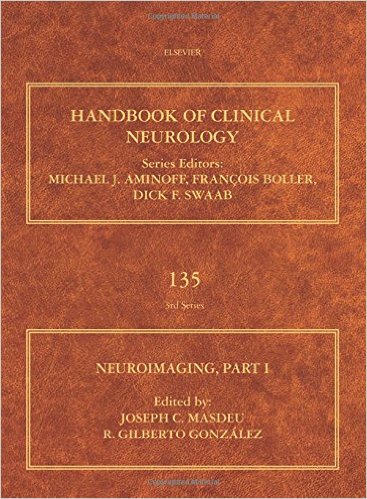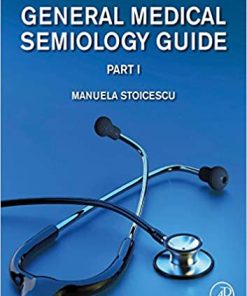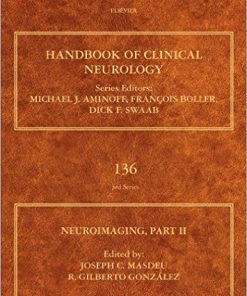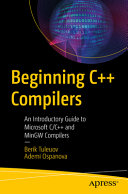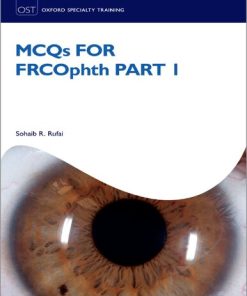Neuroimaging Part I Joseph C. Masdeu And R. Gilberto González (Eds.)
$50.00 Original price was: $50.00.$25.00Current price is: $25.00.
Neuroimaging Part I – Ebook Instant Download/Delivery ISBN(s): 9780444534859,0444534857
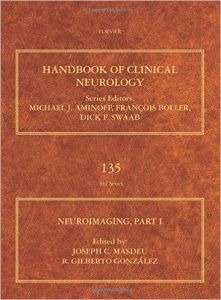
Product details:
- ISBN-10 : 0444534857
- ISBN-13 : 978-0444534859
- Author(s): Joseph C. Masdeu,R. Gilberto González
Neuroimaging, Part One, a text from The Handbook of Clinical Neurology illustrates how neuroimaging is rapidly expanding its reach and applications in clinical neurology. It is an ideal resource for anyone interested in the study of the nervous system, and is useful to both beginners in various related fields and to specialists who want to update or refresh their knowledge base on neuroimaging.
This first volume specifically covers a description of imaging techniques used in the adult brain, aiming to bring a comprehensive view of the field of neuroimaging to a varying audience. It brings broad coverage of the topic using many color images to illustrate key points.
Contributions from leading global experts are collated, providing the broadest view of neuroimaging as it currently stands. For a number of neurological disorders, imaging is not only critical for diagnosis, but also for monitoring the effect of therapies, and the entire field is moving from curing diseases to preventing them. Most of the information contained in this volume reflects the newness of this approach, pointing to this new horizon in the study of neurological disorders.
Table contents:
Section I Neuroimaging Methods
1. Computed Tomography Imaging and Angiography: Principles
Shervin Kamalian, Michael H. Lev and Rajiv Gupta
2. Magnetic Resonance Imaging: Principles
Andrew Kiruluta and R. Gilberto González
3. Volumetric and Fiber-tracing MRI Methods for Gray and White Matter
Mykol Larvie and Bruce Fischl
4. Functional Magnetic Resonance Imaging
Bradley R. Buchbinder
5. Clinical magnetic resonance spectroscopy of the central nervous system
Eva-Maria Ratai and R. Gilberto González
6. Brain perfusion: Computed tomography and magnetic resonance techniques
William A. Copen and Michael H. Lev
7. Magnetic resonance angiography: physical principles and applications
Andrew Kiruluta and R. Gilberto González
8. Diagnostic angiography of the cerebrospinal vasculature
James D. Rabinov, Thabele M. Leslie-Mazwi and Joshua A. Hirsch
9. Neurosonology and Noninvasive Imaging of the Carotid Arteries
Javier M. Romero
10. Myelography: modern technique and indications
Stuart R. Pomerantz
11. Positron Emission Tomography
Katherine Lameka, Michael Farwell and Masanori Ichise
12. Positron Emission Tomography: Ligand Imaging
Abass Alavi and Andrew B. Newberg
13. Single photon emission tomography
Koen Van Laere
Section II Brain Diseases
14. Intra-axial Brain Tumors
Otto Rapalino, Tracy T. Batchelor and R. Gilberto González
15. Extra-axial Brain Tumors
Otto Rapalino and James Smirniotopoulos
16. Imaging acute ischemic stroke
R. Gilberto González and Lee H. Schwamm
17. Other Cerebrovascular Occlusive Disease
Aneesh Singhal and Pamela W. Schaefer
18. Hemorrhagic Cerebrovascular Disease
Javier M. Romero and Jonathan Rosand
19. Infection
Gaurav Saigal, Natalya Nagornaya and M. Judith D. Post
20. Multiple Sclerosis
Massimo Filippi Sr.
21. Other non-infectious Inflammatory Disorders
Alex Rovira
22. Imaging neuro-trauma
Rajiv Gupta and Sandra Patricia Rincon
23. Cerebellar disorders: clinical/radiological findings and modern imaging tools
Mario Manto
24. Imaging of genetic and degenerative disorders primarily causing Parkinsonism
David J. Brooks
25. Genetic and degenerative disorders primarily causing other movement disorders
Nicola Pavese
26. Genetic and Degenerative Disorders Primarily Causing Dementia
Joseph C. Masdeu
27. Neurocutaneous syndromes
Doris D. Lin
28. Cerebrospinal fluid flow in adults
William Bradley and Victor Haughton
29. Metabolic and endocrine disorders
Florian S. Eichler
30. Skull-base Lesions
Hugh D. Curtin and Hillary R. Kelly
31. Imaging of orbital disorders
Hugh D. Curtin and Mary Beth Cunnane
People also search:
neuroimaging in parkinson’s disease
neuroimaging in psychiatry
neuroimaging in psychology
neuroimaging procedure
a noninvasive neuroimaging technique that produces very clear and detailed
which procedure is not a form of neuroimaging
You may also like…
Business & Economics - Professional Finance
2017 Financial Risk Manager (FRM) Exam Part I Financial Markets and Products 1st Edition
Science (General)
Medicine - Others
Computers - Programming
Medicine
Crime
Computers - Programming


